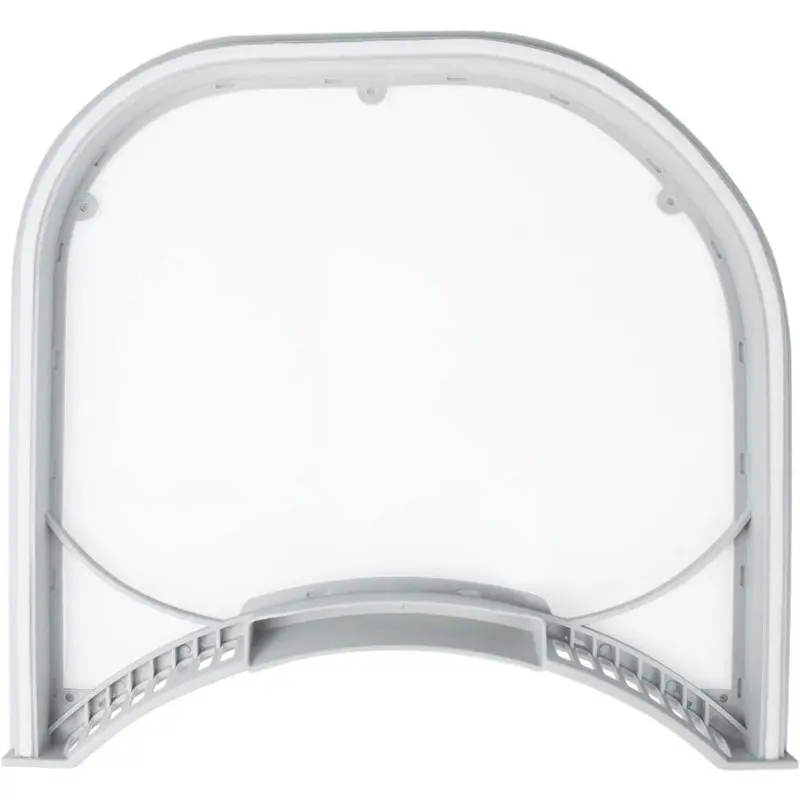Understanding the Critical Role of Dryer Lint Filters in Modern Laundry
Every time you complete a load of laundry, a small but mighty component plays a crucial role in keeping your home safe and your clothes perfectly dried. The dryer lint filter, often overlooked in our daily routines, serves as the first line of defense against potential hazards while ensuring optimal performance of your dryer. This essential component captures loose fibers, hair, and debris that separate from your clothes during the drying cycle, preventing them from clogging your dryer's ventilation system.
In today's world where energy efficiency and home safety are paramount concerns, understanding the significance of your dryer lint filter becomes more important than ever. Not only does it protect your home from potential fire hazards, but it also helps maintain the efficiency of your dryer, potentially saving you hundreds of dollars in energy costs and extending the life of your appliance.

The Science Behind Lint Collection and Filtration
How Lint Forms During the Drying Process
During the tumbling action of your dryer, clothes naturally shed tiny fibers as they rub against each other. Heat and mechanical action cause fabric fibers to loosen and break free, creating what we know as lint. Different fabrics produce varying amounts of lint – cotton and wool are typically heavy lint producers, while synthetic materials generally produce less. This continuous shedding process is normal and actually helps soften your clothes over time.
The air circulation system in your dryer catches these loose fibers, directing them toward the lint filter. As warm air flows through the drum and out through the exhaust vent, the filter acts as a mesh barrier, trapping these particles while allowing air to pass through freely. Understanding this process helps emphasize why regular lint filter maintenance is crucial for optimal dryer performance.
The Engineering of Effective Lint Filtration
Modern dryer lint filters are designed with precise engineering considerations to balance airflow with particle capture efficiency. The mesh screen is carefully calibrated to catch lint particles while maintaining adequate airflow for proper drying. Most filters use a fine mesh pattern that can capture particles as small as 1/16 of an inch while still allowing sufficient air movement.
The placement of the lint filter is also strategically determined by manufacturers. Most commonly located either at the door opening or on top of the dryer, this positioning ensures easy access for cleaning while maximizing the filter's effectiveness in catching lint before it enters the exhaust system.
Safety Benefits of Regular Lint Filter Maintenance
Fire Prevention and Risk Reduction
One of the most critical functions of a dryer lint filter is fire prevention. According to fire safety statistics, thousands of house fires each year are attributed to clothes dryers, with lint buildup being a leading cause. When lint accumulates in the filter or ventilation system, it creates a highly flammable situation. The combination of heat, restricted airflow, and combustible lint can quickly lead to dangerous conditions.
Regular cleaning of your dryer lint filter dramatically reduces this risk by preventing lint from entering the ventilation system where it can accumulate in hard-to-reach places. This simple maintenance task is your first defense against dryer-related fires and should be performed before or after every load.
Maintaining Proper Ventilation
Beyond fire safety, a clean dryer lint filter ensures proper ventilation throughout your dryer system. When air can flow freely, heat and moisture are efficiently expelled from the dryer, preventing numerous potential issues. Good ventilation prevents excess moisture buildup, which could otherwise lead to mold growth in your laundry area or within the dryer itself.
Proper airflow also helps maintain consistent drying temperatures, protecting your clothes from heat damage and reducing the risk of shrinkage or fabric deterioration. The ventilation system works in harmony with the lint filter to maintain optimal drying conditions and protect both your appliance and your garments.
Energy Efficiency and Performance Impact
Reducing Energy Consumption
A clean dryer lint filter significantly impacts your appliance's energy efficiency. When the filter is clogged, your dryer must work harder and run longer to dry clothes, consuming more electricity in the process. Studies show that a clean lint filter can reduce energy consumption by up to 30% compared to operating with a clogged filter.
This increased efficiency not only reduces your environmental footprint but also translates to tangible savings on your utility bills. Regular maintenance of your dryer lint filter is one of the simplest yet most effective ways to improve your home's energy efficiency and reduce operating costs.
Optimizing Drying Performance
The state of your dryer lint filter directly affects drying performance. A clean filter allows for optimal airflow, which means clothes dry faster and more evenly. When the filter is clogged, hot air cannot circulate properly, leading to longer drying times and inconsistent results. This can mean some clothes remain damp while others may become overdried.
Maintaining a clean lint filter also helps preserve the quality of your clothes. When clothes dry efficiently, they're exposed to heat for shorter periods, reducing wear and tear. This proper drying action helps maintain fabric integrity and extends the life of your garments.
Maintenance and Care Guidelines
Proper Cleaning Techniques
Cleaning your dryer lint filter requires more than just removing the visible lint with your fingers. For optimal performance, use a soft brush to gently remove accumulated lint, ensuring you don't damage the mesh screen. Periodically, wash the filter with warm soapy water to remove any fabric softener residue that may have built up over time. Allow the filter to dry completely before reinstalling it.
It's important to inspect the filter regularly for any tears or damage that could compromise its effectiveness. If you notice any deterioration, replace the filter immediately to maintain safety and efficiency. Many manufacturers recommend replacing lint filters every few years, even if they appear undamaged.
Professional Maintenance Recommendations
While regular cleaning of the lint filter is something every homeowner can do, professional maintenance plays a vital role in ensuring your dryer's longevity and safety. Schedule annual professional cleanings of your entire dryer vent system, as lint can accumulate beyond the filter in areas you can't easily access.
Professional technicians can also inspect your dryer's internal components, ensuring everything is working correctly and safely. They can identify potential issues before they become serious problems and provide guidance on maintaining your specific model for optimal performance.
Frequently Asked Questions
How often should I clean my dryer lint filter?
You should clean your dryer lint filter before or after every load of laundry. Additionally, perform a deep cleaning with soap and water every few months to remove any buildup of fabric softener or other residues that can reduce its effectiveness.
What are the signs of a clogged or malfunctioning lint filter?
Common signs include clothes taking longer than usual to dry, excessive heat in the laundry room, a burning smell during operation, or clothes feeling unusually hot at the end of a cycle. If you notice any of these signs, clean your lint filter immediately and inspect the entire ventilation system.
Can I run my dryer without a lint filter?
Never operate your dryer without a lint filter installed. Doing so can lead to lint accumulation in the vent system, creating serious fire hazards and reducing your dryer's efficiency. It can also void your warranty and potentially damage your appliance.

